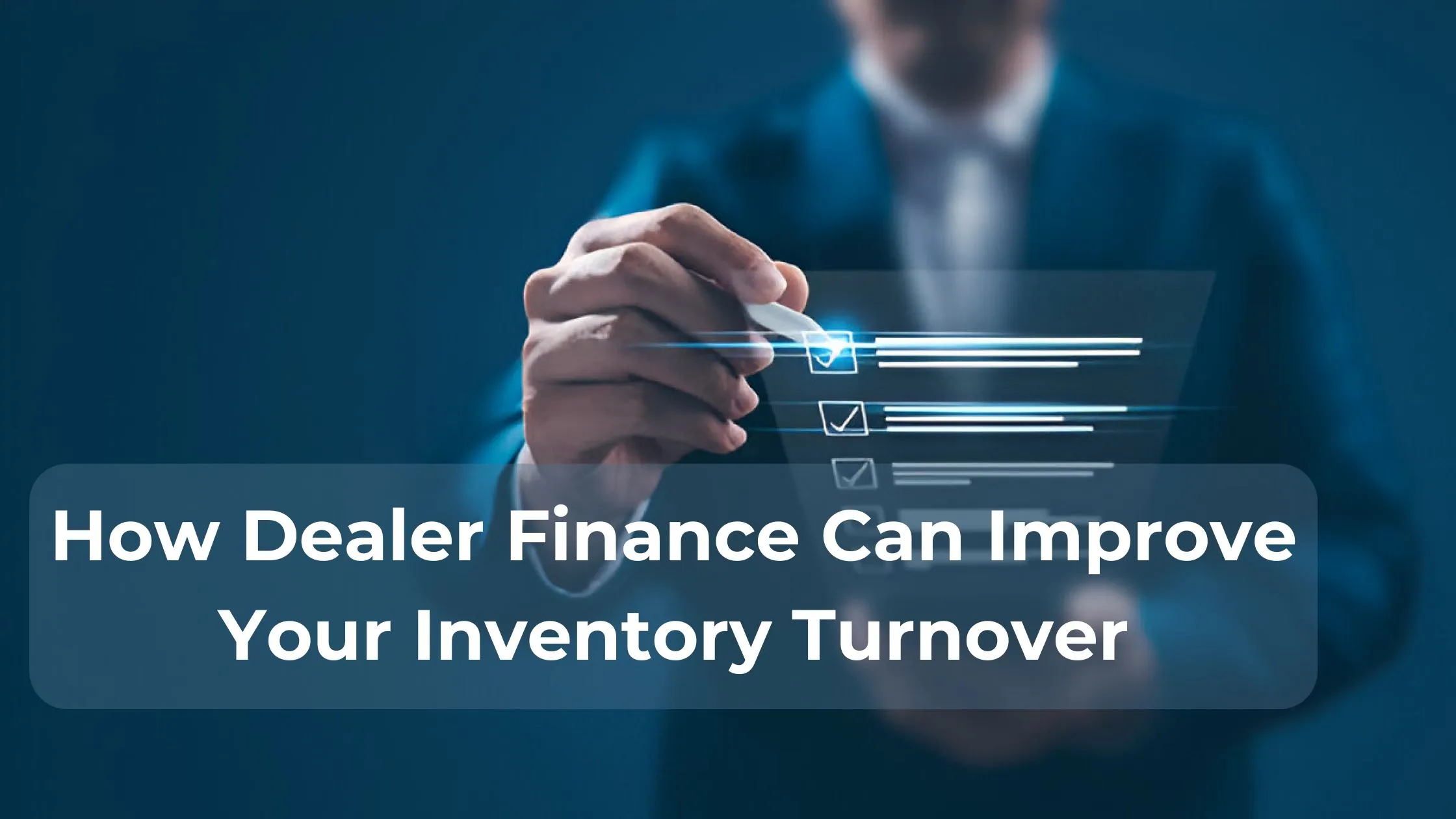In today’s competitive business landscape, maintaining a healthy inventory turnover is crucial for the success of any company. Inventory turnover measures how efficiently a company sells and replaces its stock over a certain period. A higher turnover rate indicates that a company is effectively managing its inventory, leading to better cash flow and increased profitability. One effective way to enhance inventory turnover is through dealer finance, a financial solution that provides businesses with the necessary funds to purchase inventory and equipment. This article explores how dealer finance can significantly improve your inventory turnover, particularly when utilizing the tailored solutions offered by a leading provider in the industry.
Understanding Dealer Finance and Its Features
Dealer finance is a financial solution designed to assist businesses in obtaining funds for purchasing inventory and equipment. This financing option allows dealers to purchase larger quantities of goods, which helps them meet growing demand and boost sales. The main benefit of dealer finance is that it allows businesses to pay their suppliers upfront while providing them with the opportunity to sell the inventory and generate revenue over time.
Features-
Dealer Finance solution offers several features that make it an attractive option for businesses:
- Unsecured Line of Credit Facility: Available to dealers with a good track record and strong performance with anchor corporates.
- Loan Agreement: A formal agreement between the dealer and financier.
- Invoice Financing: Dealers can finance payments to anchor corporates against confirmed invoices.
- Technology Integration: Seamless flow of invoice information through integration with corporates’ ERP systems and the Portal.
Driving Growth: Dealer Finance Workflow Explained (Can use images )

- One-Time Credit Limit Setup: Dealer finance initiates with an assessment of anchor corporates and dealers to establish suitable credit limits. This evaluation ensures dealers receive adequate financing based on their creditworthiness and relationships with anchor clients. Digital onboarding of both parties simplifies the process, efficiently gathering required information.
- Digital Flow of Anchor Authenticated Invoices: Following credit limit setup, the process involves integrating with the anchor’s ERP system for seamless invoice processing. This enables online authentication and flow of invoices, ensuring transparency and accuracy. Dealers without ERP integration can alternatively upload invoices digitally, accommodating diverse technological capabilities.
- Online Disbursement: Authenticated purchase orders receive prompt funding, usually within 24 hours of approval. Funds are disbursed directly to the anchor corporate’s designated bank account, facilitating efficient financial transactions. Credit limits are adjusted dynamically after each disbursement, reflecting repayment performance and business dynamics.
- Online Repayment Before Due Date: Dealers repay the financed amount via NACH, automating debits from their accounts on scheduled due dates. They enjoy flexibility to repay early, effectively managing cash flow. Each repayment replenishes their credit limit, ensuring continued access to financing for future inventory purchases. This structured process supports dealers in promptly meeting market demands while optimizing operational and financial strategies.
The Importance of Inventory Turnover in Business Operations
- A high turnover rate indicates that products are selling quickly, which signals strong demand and effective marketing. This rapid sales pace helps minimize storage costs and reduces the risk of holding onto outdated inventory.
- Efficient inventory turnover enhances cash flow management. When products move swiftly, it frees up cash that can be reinvested in crucial areas like marketing, research, and expansion. This liquidity boosts operational efficiency and enables businesses to seize new opportunities more effectively.
Ultimately, maintaining a healthy inventory turnover rate contributes significantly to profitability. It helps businesses avoid the pitfalls of overstocking, which ties up capital, and understocking, which can lead to missed sales and customer dissatisfaction. By optimizing inventory levels, companies can better manage their finances and maximize revenue potential.
Benefits of Dealer Finance
a) Benefits for Lenders:
- New Lending Opportunities: Dealer finance opens doors to new and profitable lending opportunities with minimal upfront investment. By tapping into the dealer network, lenders can expand their portfolio and reach new markets.
- Standardized Process: Utilizing a digital and standardized underwriting process streamlines operations for lenders. This improves efficiency, reduces manual errors, and accelerates the decision-making process.
b) Benefits for Dealers:
- Immediate Working Capital: Dealers gain immediate access to necessary funds for purchasing goods, enabling them to meet customer demand promptly and capitalize on business opportunities.
- Lower Interest Rates: Dealer finance typically offers significantly lower interest rates compared to prevailing market rates. This cost-saving benefit enhances profitability and financial stability for dealers.
c) Benefits for Anchors:
- Off-Balance Sheet Funding: Dealer finance provides off-balance sheet funding options, improving financial metrics by reducing the impact on debt-equity ratios and enhancing financial flexibility.
- Increased Sales and Market Share: By facilitating dealers’ ability to purchase more inventory, dealer finance supports anchors in increasing sales volumes and capturing a larger market share.
How Dealer Finance Plays a Crucial Role in Improving Inventory Turnover
- Ensuring Adequate Inventory Levels: Dealer finance allows businesses to purchase inventory in bulk, which can lead to cost savings through volume discounts. With adequate inventory levels, companies can meet customer demand promptly, leading to higher sales and faster inventory turnover.
- Reducing Lead Times: With dealer finance, businesses can secure the necessary funds to source inventory from reliable suppliers without delay. This reduces lead times and ensures that products are available when customers need them, preventing stockouts and lost sales.
- Enhancing Cash Flow Management: Dealer finance provides businesses with the flexibility to manage their cash flow more effectively. By financing inventory purchases, companies can preserve their working capital for other essential expenses, such as payroll, marketing, and technology upgrades.
Conclusion
Dealer finance is a powerful tool for improving inventory turnover. By providing businesses with the necessary funds to purchase inventory, dealer finance helps enhance cash flow management, increase sales, and boost profitability. Mynd Fintech’s dealer finance solution offers a seamless, digital, and efficient way to access financing, making it an ideal choice for businesses looking to grow and succeed in today’s competitive market.

